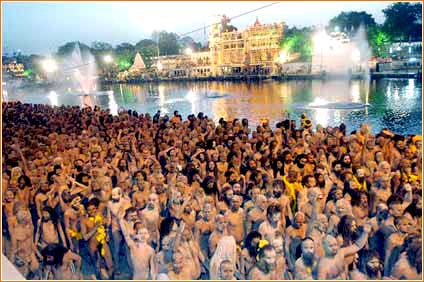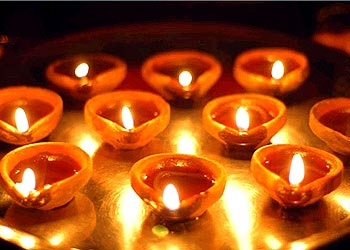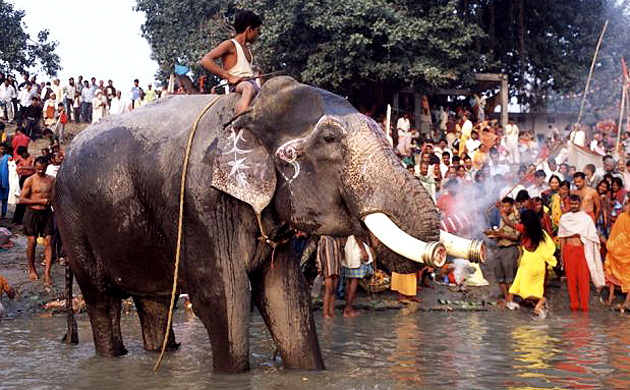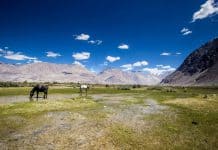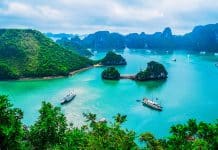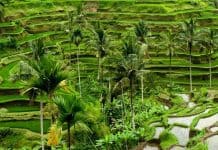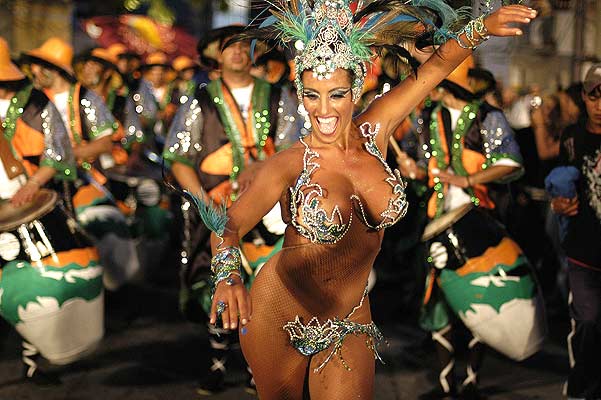The best of India Festivals.
In any country, visiting during a traditional festival can provide a closer look at the local culture. In India, it’s no different, as the sights, sounds, and tastes of each celebration showcase the beliefs and traditions unique to that area. Here are some of the most exciting festivals in India you won’t want to miss.
Kumbh Mela
The Kumbh Mela is the largest religious gathering on earth India Festival. The celebration gets its legitimacy from Hindu mythology, which tells of the ancient sky-borne struggle between gods and demons over a pot, or kumbh, which contained Amrita Kalasha, the immortal nectar. During the ferocious battle a few drops sloshed from the kumbh and fell to four locations: Allahabad, Ujjaink, Nashik and Haridwar. To commemorate this holy event, the Kumbh Mela is held every three years, rotating among these four cities, meaning that each city hosts every 12 years.
Each Kumbh Mela lasts about six weeks, but most people participate during certain auspicious bathing dates (of which there are usually six or seven), when believers bathe ceremoniously in the sacred Ganges, Shipra or Godavari rivers in order to achieve “moksha,” or liberation from the cycle of birth and death.
Each celebration attracts tens of millions of pilgrims from all over India and provides a perfect opportunity to confront the country’s diversity and witness the interesting behavior of Sadhus, which are holy men (and sometimes women) who have renounced the material world in order lead an aesthetic life. Some live in caves or cemeteries, some are committed to a life of perpetual wandering. The Kumbh Mela is a moment of particular glory for Naga sadhus, who carry tridents and wear no clothes (they are always allowed first into the water).
Dates:
2013 (January-February): Allahabad
2015 (August-September): Nasik
2016 (April-May): Ujjaink
Holi
The Kumbh Mela may be the largest India festival, but Holi is perhaps its most exuberant.
During Holi social hierarchies —including differences in age, gender, status and caste—are cast aside in celebration of the beginning of spring. This is basically achieved by hurling colored water and gulal (scented powder) at any- and everyone within your range.
On the eve of the festival, which is known as Holika Dahan, bonfires are lit, followed by elaborate prayers and offerings of praise. The bonfires symbolize the demise of the evil demoness Holika.
In most areas Holi lasts about two days, but in some places the celebrations go on for as long as two weeks. Festivities begin towards the end of winter, on the last full moon day of the lunar month Phalguna, which usually falls in the later part of February or March.
Holi is best experienced in North India, as those in the south don’t celebrate Holi with the same fervor. If you plan on participating, be sure to wear clothes that can be ruined.
Dates:
2012 March 8
2013 March 27
Diwali
Diwali (or Deepavali), which is popularly known as “the festival of lights”, is celebrated between mid-October and mid-December for a number of different reasons, depending on who’s doing the celebrating.
The spiritual meaning of the word Diwali is “the awareness of the inner light”, or Atman. Although the manner of celebration varies from region to region, the essence remains the same: it is a time to rejoice in the Atman, the underlying Reality of all things.
For Jains, Diwali marks the attainment of nirvana by Mahavira in 527 BCE. For Hindus, Diwali is one of the most important festivals of the year and is celebrated by families by performing traditional activities together, usually within the home.
The festival spans five days during Kartika (October/November), during which homes and shops are illuminated with twinkling clay lamps that signify the triumph of good over evil, and candles are set afloat on rivers to guide Lord Rama home from exile.
Houses and businesses are also cleaned and decorated in the lead up to the festival, all done in order to make the goddess Lakshmi feel welcome.
Many homes also display breathtakingly intricate rice-flour designs called rangoli during this time, and fireworks light up the sky to drive evil spirits away.
Dates:
2012 November 13
2013 November 3
Dussehra
Dussehra (or Dasara) is a word derived from Sanskrit meaning “remover of bad fate”. It is among the most important festivals in India, honoring Durga, the Eternal Mother, and Rama, the seventh incarnation of Vishnu (who is also the Hindu model of the ideal man).
Both of these supreme beings valiantly conquered evil forces during the mythical ages, and this joyous 10-day festival celebrates their divinity. It occurs during Asvina, which falls between September and October, and celebrated its 400th anniversary in 2010.
The legend legitimizing the celebration goes like this: Durga — a fierce goddess and wife of Shiva — was created when the gods needed an all-powerful being to vanquish the Demon King Mahishasura. Every god in the Hindu canon gave their weapon to the eight-armed Durga, who then destroyed the wicked demon and rescued the world from his evils.
It is a very auspicious time for Hindus, who believe that any undertaking commenced on Dussehra is destined to succeed.
The celebrations take different forms depending on which state you are in, but all are united by the underlying theme of good prevailing over evil. In West Bengal, Dussehra takes on a alternative form known as “Durga Puja”.
The first nine nights of the festival, called Navaratri, are spent worshiping Durga. During this time the devout stick to a strict vegetarian diet, with many consuming only sweets and fruits. Celebrations are largely focused around the home and the immediate neighborhood, where people visit one another to exchange gifts.
In states such as Maharashtra and Gujarat, community dances called Dandiya take place each night. The tenth day, Vijayadashami, is the apotheosis of the festival, and is celebrated in fervent honor of Durga.
The city of Mysore is perhaps the best place to partake in the festivities. It tends to be a pretty elaborate affair and attracts a considerable audience from all over the world.
Dates:
2012 October 24
2013 October 14
Ganesh Chaturthi
Ganesh Chaturthi (or Vinayaka Chaturthi) is a festival dedicated to the much-adored elephant-headed Hindu god Ganesh, who is the son of Shiva and Parvati and is worshiped as the god of wisdom and good fortune.
Ganesh Chaturthi celebrations occur all over India and last for ten days in the Hindu month of Bhadra (August/September). The most spectacular celebrations occur in Maharashtra, Andhra Pradesh, Karnataka, Goa and Mumbai.
During the festival huge plaster Ganesh idols are constructed (size may vary from one inch to over 70 feet), fervently worshiped for ten days, and then, after a final offerings of coconuts, flowers and camphor, the idols are paraded through the streets midst singing and dancing before they are ritually immersed in a river or sea.
Like many festivals in India, Ganesh Chaturthi is a time to consume copious quantities of sweets, especially modak, a dumpling made from rice/wheat flour and filled with a scrumptious paste of coconut, condensed milk, sugar and cardamom. The pot-bellied Ganesh symbolically gorges on modak and other sweets each day of the festival, and once he has taken his spiritual nourishment the sweets are shared among his devotees.
Dates:
2012 September 19
2013 September 9
Pushkar Camel Fair
According to the Hindu epics, the holy city of Pushkar appeared when Brahma dropped a lotus flower to the earth. Due to this glorious occurrence, Pushkar today has one of the world’s few Brahma Temples, which results in heavy pilgrim traffic.
The town is a magical place to visit any time of the year, but the holy month of Kartika, the eighth lunar month of the Hindu calendar, is an auspicious time when Hindu pilgrims come from all over the country to bathe in the sacred waters of Pushkar Lake.
Accompanying this display of religious devotion is the wild sideshow of the Pushkar Camel Fair. Camel drivers from all around Rajasthan drive their caravan across the desert and converge in Pushkar for Kartika Purnima (full moon), with around 200,000 attending the fair annually, accompanied by some 50,000 camels, horses, and cattle.
Animal trading begins a week before the official mela, but when the fair begins animal commerce recedes into the background as a number of bizarre spectacles begin to take place, including gypsy musicians, snake charmers, children balancing on poles, camel races, turban-tying lessons, mustache contests, etc. There is even a competition to see who can balance the most people on a camel.
The celebration climaxes on dousing day, the last night of the fair, when thousands of devotees light incense, chant, wash away their sins and set candles afloat on Pushkar Lake.
Dates:
2012 18-27 November
2013 9-17 November
Sonepur Mela
Each November during the full moon of Kartika Purnima, Asia’s largest animal fair, the Sonepur Mela (also known as the Sonepur Cattle Fair) takes place over a period of approximately 15 days in November. The festival celebrates Vishnu’s bringing to an end the prehistoric battle between elephants (lords of the forests) and crocodiles (lords of the water).
With some 700,000 attendees every year (not mentioning the many thousands of animals) the Sonepur Mela is four times the size of Pushkar’s camel fair.
The mela has its origins in antiquity, when Chandragupta Maurya used to buy elephants and horses from across the Ganges River, attracting traders from places as distant as Central Asia.
Many animals exchange hands during the fair, including all sorts of dogs, buffaloes, cattle, donkeys, ponies, horses, sheep, rabbits, goats, camels and even elaborately-decorated elephants, which are lined up in the Hathi Bazaar, ready to be traded (though they cannot legally be sold).
Apart from the fair, pilgrims also come to pay their respects to the Hariharnath Temple, and bathe where the Ganges joins with the Gandak and Mehi rivers, which is regarded as a holy site.



